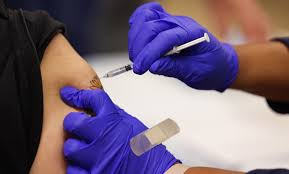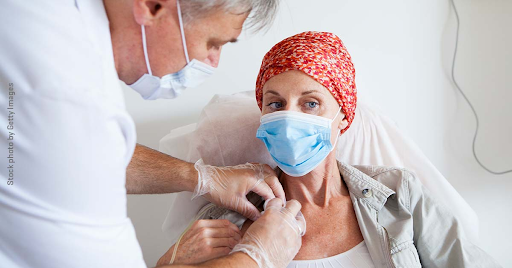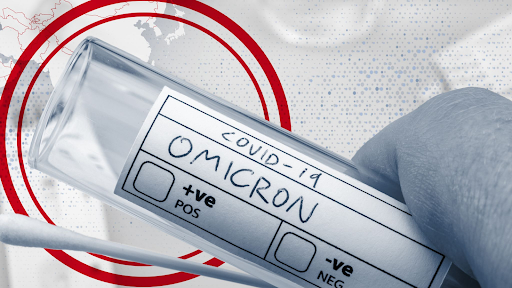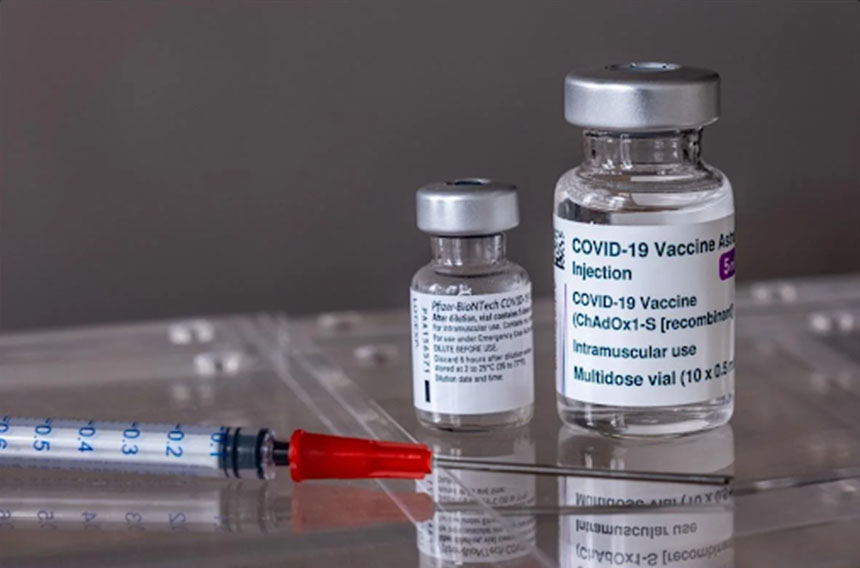INTRODUCTION
The emerging SARS-CoV-2 Omicron (B.1.1.529) variant has caused considerable concern about the future of containing the ongoing COVID-19 pandemic (World Health Organization, 2021). First isolated in late November of 2021, the Omicron variant harbors a staggering 30-40 mutations in the viral spike (S) protein, including substantial changes to the S-receptor-binding domain, that have produced significant concern about the potentially high immune evasion of this variant (World Health Organization, 2021).
Additionally, the rapid increase in COVID-19 cases attributed to the Omicron variant (Karim and Karim, 2021) has caused major public health concern about its increased transmissibility. We recently reported that the Omicron variant exhibits drastic resistance to neutralizing antibodies (nAbs) in healthy recipients of two-dose mRNA-1273 or BNT162b2 mRNA vaccines, as well as in COVID-19 patients (Zeng et al., 2021a). However, healthy individuals who received an additional third mRNA booster vaccine dose exhibit much stronger protection against the Omicron variant, comparable to their protection against other SARS-CoV-2 variants of concern (VOCs) (Zeng et al., 2021a).
Our results indicate that not only does booster vaccination enhances nAb levels, but it also broadens the nAb response against these VOCs, including the Omicron variant. However, it remains unclear how booster vaccination impacts immunity against the Omicron variant in immune compromised groups, especially in patients with cancer who are on active therapy. A report from our group has recently shown that patients with cancer are a key group of immune compromised individuals with reduced responsiveness to two-dose mRNA vaccination (Zenget al., 2021b). This reduced vaccine responsiveness can be somewhat overcome by the administration of booster vaccine doses (Greenberger et al., 2021; Shapiro et al., 2021).
However, the breadth of the nAb response in these boosted patients, in particular their immunity against the Omicron variant, remains unclear. This is a critical question to resolve in order to determine future vaccination strategies, especially the administration of additional booster doses, for immuno compromised groups.
To address this urgent need, we utilized our previously reported, highly sensitive, pseudotyped-lentivirus neutralization assay (Zeng et al., 2020) to examine the nAb response to Omicron compared to Delta and the ancestral D614G variants in patients with cancer (n 50) following two mRNA vaccine doses n 23) and three doses including a third booster vaccine (n = 27). Samples were collected between 31 and 121 days (median 95 days) after the second mRNA vaccine dose for 15 lung cancer patients vaccinated with mRNA-1273 (n = 10) or BNT16262 (n = 5) and 8 breast cancer patients vaccinated with mRNA-1273 (n 2) or BNT162b2 (n = 6).
For booster vaccine recipients, samples were collected between 2 and 112 days (median 47 days) after the third mRNA vaccine dose for patient with solid tumors, including 12 breast cancer patients vaccinated with mRNA-1273 (n = 4) or BNT16262 (n = 8) and a mix of patients with 15 other types of solid tumor (such as melanoma, genitourinary, gastrointestinal, etc.) who were vaccinated with either mRNA-1273 (n 5) or BNT162b2 (n = 10) (Table S1). Neutralizing Abtiers (NT50) were measured against the Omicron variant, along with the ancestral D614G SARS CoV-2 and the Delta variant, the latter being responsible for the most recent wave of infections.
We found that, for recipients of two mRNA vaccine doses, the Delta and Omicron variants exhibited a 4.2 fold (p < 0.01) and 21.3-fold (p < 0.01) reduction in NT50, respectively, compared to D614G (Figure S1A). Notably, 0% (0/23), 13.0% (3/23), and 52.2% (12/23) of patients exhibited nAb titers below the limit of detection (NT50 < 40, as determined by the lowest dilution used in the neutralization assay) for the D614G, Delta, and Omicron variants (Figure S1A), respectively. These results clearly demonstrate the strong nAb resistance of the Omicron variant against two mRNA vaccine doses in patients with cancer. Additionally, mRNA-1273 patients exhibited statistically insignificant higher nAb titers compared to those vaccinated with BNT162b2 (Figure S1B).

We further examined the nAb titers against the Omicron, D614G, and Delta variants for patients with cancer who received a third dose of vaccine, i.e., booster dose. Overall, booster recipients exhibited dramatically increased nAb titers (Figure S1C). Strikingly, we found that the Omicron variant only exhibited a 5.1-fold (p < 0.0001) reduction in nAb titers, compared to D614G (Figure S1C), and this indicates generation of a stronger and much broader neutralization against the Omicron variant after the booster vaccination.
The nAb titer against the Delta variant in booster recipients dropped by 3.6-fold compared to D614G, which was comparable to the two-dose vaccination (Figure S1C). Of note, 0% (0/27), 0% (0/27), and 11.1% (3/27) patients exhibited nAb titers below the limit of detection (NTso < 80; the lowest dilution used was 1:80 because of relatively high titer for boosters) for the D614G, Delta, and Omicron variants, respectively Figure S1C). These results were in sharp contrast to the results for the two-dose vaccination regime, showing that a booster mRNA vaccine dose likely provides significantly enhanced broader protection against the Omicron variant for patients with cancer, which is similar to the observed protection against Omicron in healthy boosted individuals.
We found that BNT16262 boosted patients showed higher nAb titers than did mRNA-1273-boosted patients, although the difference was not statistically significant (Figure S1D). We also examined the impact of antiPD-1/PD-L1 treatments on nAb response in two-dose and booster-vaccinated patients with cancer. We observed statistically insignificant differences in NT50 titers in non-PD-1/PD-L1-treated patients compared to patients treated with immune checkpoint blockers regardless of whether they had received two-dose vaccines or three doses including the booster shots (Figure S1E).
Despite previous findings that nAb response to mRNA vaccination is age dependent (Collier et al., 2021), we did not observe a statistically significant correlation between age and NTs0 values in these patients with cancer (Figure S1F; this was likely due to the skewing to older populations and the relatively small size of this cohort. Given increasing concerns about declining efficacy of SARS-CoV-2 vaccines, especially against VOCs (Keeh-ner et al., 2021), we also examined the correlation between NT50 and time after the second vaccine dose for patients with cancer. We observed a negative correlation between time after second and booster doses of mRNA vaccine and NTso values (Figures S1G); however, these correlations were not statistically significant, again likely because of the limited sample sizes in this cohort. Nevertheless, these results suggest possible waning immune protection of nAbs against SARS-CoV-2 and VOCs following mRNA vaccination, including vaccination with the booster.
In this work, we investigated the efficacy of mRNA-vaccine-induced nAb response in patients with solid tumors against the Omicron variant in parallel with the ancestral D614G and the Delta variants. Our results demonstrate that patients with cancer who received a booster dose of the mRNA vaccine displayed a significantly greater neutralizing capacity against the Omicron variant in comparison to those recipients of only the two dose mRNA vaccine. This result aligns with findings in health care workers (HCWs) (Zeng et al., 2021a). Although the mechanism underlying the enhanced breadth of the nAb activity against Omicron, and likely other emerging variants, requires further investigation, our results provide reassurance that a booster after two-dose mRNA vaccination likely enhances protection in patients with solid tumors.
The recent emergence of VOCs for SARS-CoV-2 has made the impact of vaccine response in immune compromised individuals, and particularly in patients with cancer, a topic of significant interest. Our study demonstrates that the diagnosis of a solid cancer person does not appear to negatively impact the humoral immune response to booster-mediated protections against SARS-CoV-2 variants, including Omicron. Some of the limitations of this study include the small size of the cohort (n 50 patients with cancer), the differences between the two-dose and booster cohorts regarding solid tumor subtypes, and also the timing of sample collection after vaccination. Additionally, the utilization of a single assay to evaluate nAb levels may not be fully representative of the status of infection protection in these patients with cancer. Finally, our study did not address the risk of breakthrough infections clinically. Therefore, patients with cancer should still remain cautious regarding immunity to the Omicron variant even after vaccination with an mRNA booster.
SUPPLEMENTAL INFORMATION
Supplemental information can be found online at https://doi.org/10.1016/j.ccell.2021.12.014.

ACKNOWLEDGMENTS
We thank members of the Liu lab, including Yi-Min Zheng and Julia Faraone, for sharing reagents and discussion. Additonal gratitude is extended toward Kevin Weller, Jamie Hamon, Donna Bucci, Kelsi Reynolds, Mohamed Yusuf, Robert Davenport, and Taylor Chatlos from the Immune Monitoring and Discovery Platform of the Pelotonia Institute for Immuno-Oncology for assistance in sample collection and discussion. We also thank members of the Li lab, including Chelsea Bolyard, Weiwei Liu, and Yi Wang, and members of the Rubinstein Lab, including Madison Sikorski, Joseph Azar, Rachael Teodorescu, Ian Carmody, Selah McKenney, and Kayla Hudson, for assistance in sample processing.
Finally, we would like to thank the NIH AIDS Reagent Program and BEI Resources for supplying important reagents that made this work possible. This work was supported by a fund provided by an anonymous private donor to Ohio State University to S.-L.L. S.-L.L. was additionally supported in part by NIH grant R01 AI150473. Z.L. was supported by the Ohio State University Comprehensive Cancer Center Cancer Center Support Grant (P30CA016058) and multiple NIH grants (R01 DK105033, R01 AI077283, R01 CA213290, P01 CA186866, R01 CA255334, and P30 CA016058). P.G.S. was supported by multiple NIH grants, including NCI P30 CA016058.S.R. and Z.L. were supported by the Peletonia Institute for Immune-Oncology.
The Pelotonia Institute for Immuno-Oncology (PIIO) is funded in part by the Pelotonia community and the Ohio State University Comprehensive Cancer Center (OSUCCC) (P30CA016058). In addition, support from the OSUCCC Shared Resources, including the Flow Cytometry and Clinical Treatment Unit and the Clinical Trials Processing Laboratory, is greatly appreciated.

DECLARATION OF INTERESTS
The authors declare no competing interests.

REFERENCES
Collier, D.A, Ferreira, I.A.T.M., Kotagiri, P., Datir, R.P., Lim, E.Y., Touizer, E., Meng, B., Abdullahi, A., Elmer, A., Kingston, N., et al.; CITIID-NIHR BioResource COVID-19 Collaboration (2021). Age-related immune response heterogeneity to SARS-CoV-2 vaccine BNT162b2. Nature 596. 417-422.
Greenberger, LM., Saltzman, L.A., Senefeld, J.W., Johnson, P.W., DeGennaro, L.J., and Nichols, G.L. (2021). Anti-spike antibody response to SARS CoV-2 booster vaccination in patients with B cell derived hematologic malignancies. Cancer Cell 39, 1297-1299. Karim, S.S.A. and Karim, Q.A. (2021). Omicron SARS-CoV-2 variant: a new chapter in the COVID-19 pandemic. Lancet 398, 2126-2128. Keehner, J., Horton, LE., Binkin, N.J., Laurent, LC., Pride, D., Longhurst, C.A., Abeles, S.R., and Torriani, F.J.: SEARCH Alliance (2021).
Resurgence of SARS-CoV-2 infection in a highly vaccinated health system workforce. N. Engl. J. Med. 385, 1330-1332.
Shapiro, L.C., Thakkar, A., Campbell, S.T., Forest, S.K., Pradhan, K., Gonzalez-Lugo, J.D., Quinn, R., Bhagat, T.D., Choudhary, G.S., McCort, M., et al. (2021). Efficacy of booster doses in augmenting waning immune responses to COVID-19 vaccine in patients with cancer. Cancer Cell 40, S1535 6108(21)00606-1.
World Health Organization (2021). Classification of Omicron (B.1.1.529): SARS-CoV-2 Variant of Concern. Pulliam, J.R.C., Schalkwyk, C.V, Govender, N., Gottberg, A.V., Cohen, C., Groome, M. J., Dushoff, J., Mlisana. K, and Moultrie, H. (2021). Increased risk of SARS-CoV 2 reinfection associated with emergence of the Omicron variant in South Africa (MedRxv). Zeng, C., Evans, J.P., Pearson, R., Qu, P., Zheng, Y.-M., Robinson, R.T., Hall-Stoodley, L., Yount, J.. Pannu, S., Mallampalli, R.K., et al. (2020). Neutralizing antibody against SARS-CoV-2 spike in COVID-19 patients, health care workers, and. convalescent plasma donors. JCI Insight 5, 143213.
Zeng, C., Evans, J.P., Qu, P., Faraone, J., Zheng, Y.-M.. Carlin, C., Bednash, J.S., Zhou, T., Lozanski, G., Mallampali, R., et al. (2021 a). Neutralization and stability of SARS-CoV-2 Omicron variant. bioRxiv. https://doi.org/10.1101/2021.12.16.472934.
Zeng, C., Evans, J.P., Reisinger, S., Woyach, J., Liscynesky, C.. Boghdadly, Z.E., Rubinstein, M.P., Chakravarthy, K., Saif, L., Oltz, E.M., et al. (2021b). Impaired neutralizing antibody response to COVID-19 mRNA vaccines in cancer patients. Cell Biosci. 11, 197.

